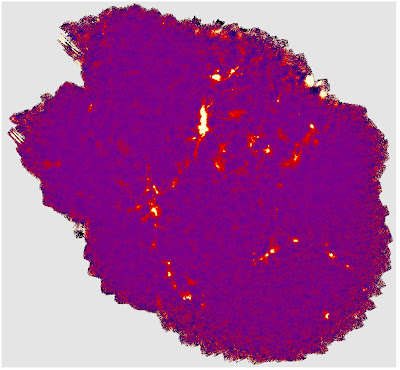From today, people using a cutting edge starlink rsynced from /stardev at JAC may notice small changes in the maps created by MAKEMAP compared to previous versions.This is caused by a change to the way in which the (RA,Dec) of each bolometer sample is calculated. The change was needed to support FTS-2.
The new scheme is mathematically equivalent to the old scheme, but groups the required transformations a little differently, resulting in
different (not
worse) numerical rounding errors. This has no effect on the majority of samples, but some samples that are very close to the edge of a pixel will be moved just that little tiny amount needed to push them over into the adjacent pixel. This results in noticeably
different (not
worse) noise in the final map.
The black curve in the following plot is a histogram of the differences between the two maps produced by the two versions of makemap, for a small Uranus observation (S8A only). The red curve is a histogram of Error component (i.e. sqrt(Variance) ) for the old map. Note the logarithmic Y axis scale.
Numerically, the RMS difference between the data values in the two maps is 8.57E-5, the square root of the mean Variance value in the old image 53.0E-5, and the square root of the mean Variance value in the new image is 52.9E-5.
So these changes are much smaller than the noise level, and so should not be a concern.


